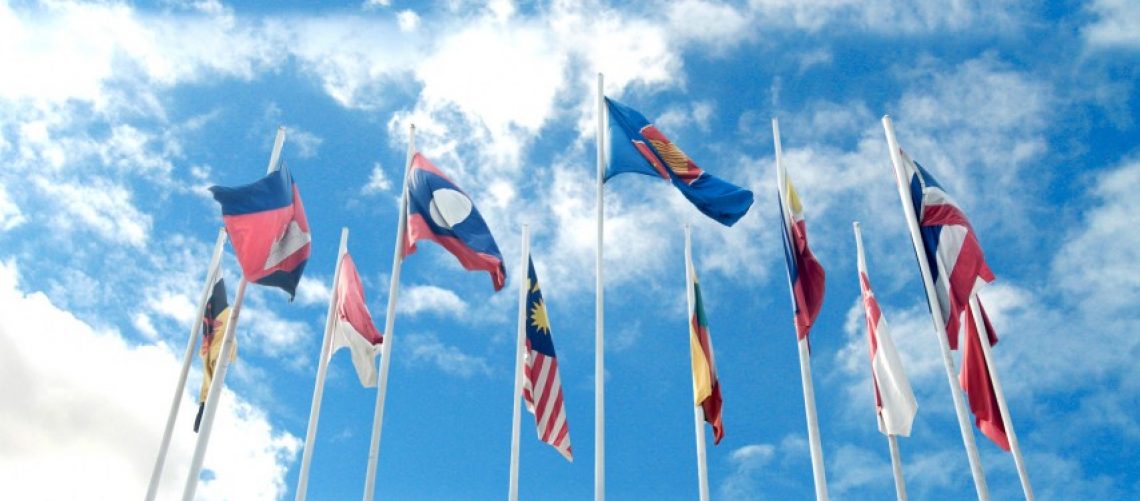Mr. Chairman,
Excellencies, Dear Colleagues,
Ladies and Gentlemen,
It is a great honour and pleasure for me to attend for the first time the PMC 10+1 Dialogue session between ASEAN and Canada.
This dialogue session offers a good opportunity for us to learn the developments of the ASEAN-Canada relations and exchange views on both Political and economic issues of mutual concern. Furthermore, cooperation between ASEAN and Canada will be strengthened and expanded for our mutual benefits.
As a member of ASEAN, Cambodia will actively participate in various regional economic initiatives and try its best to implement ASEAN Agreements, in particular the ASEAN Free Trade Area (AFTA), ASEAN Industrial Cooperation Scheme (AICO), the ASEAN Investment Area (AIA).
The 6th Summit Meeting of ASEAN Heads of State and Government in Hanoi in December last year was an important event in the process of ASEAN’s vision to move forward. The Hanoi Plan of Action (HPA) was aimed at fostering regional integration and development, promoting confidence building among Asia Pacific nations and, consequently, strengthening peace and security in this Asia Pacific region.
With this endeavour in mind, Cambodia is committed to be an active ASEAN’s Partner. Therefore, the Royal of Government Cambodia has been embarking on reforms in the military and civil service, thereby including reforms in the judiciary and public finance in order to build a solid foundation for long-term growth and sustainable development.
Mr. Chairman,
I am very pleased to note that during the past few years the ASEAN-Canada economic cooperation has taken a significant step forward. Cambodia Highly values Canada’s commitment to the region through the implementation of the ASEAN-Canada Cooperative Programme on Marine Sciences (CPMS) Phase II which we understand, was a priority for Canadian International Development Agency (CIDA) in its collaboration with ASEAN. Canada’s development cooperation programme also has a strong focus on the role of women as vital contributors to their economics. That programme is being translated into ASEAN Women’s Support Programme which has been promoted and contributed to mutual understanding.
On the economic front, it is true that the regional economics have recently been undergoing financial crisis. Nevertheless, positive signs of economic recovery have been registered by the majority of countries plagued with the crisis. Today, the expanded ASEAN-10 which has been translated into a huge market of over 500 million inhabitants with vast potentials. I do expect that ASEAN-Canada cooperation will move forward and the pending projects will be considered and proceed to their successful completion.
Mr. Chairman,
To conclude my remark, I would like to express my appreciation, to Canada for its useful assistance lended to ASEAN countries. Cambodia is looking forward to working closely with Canada as ASEAN Country Coordinator in the year 2000.
Thank you for your attention.
- ABOUT ASEANThe Association of Southeast Asian Nations, or ASEAN, was established on 8 August 1967 in Bangkok, Thailand, with the signing of the ASEAN Declaration (Bangkok Declaration) by the Founding Fathers of ASEAN: Indonesia, Malaysia, Philippines, Singapore and Thailand. Brunei Darussalam joined ASEAN on 7 January 1984, followed by Viet Nam on 28 July 1995, Lao PDR and Myanmar on 23 July 1997, and Cambodia on 30 April 1999, making up what is today the ten Member States of ASEAN.Menu
- WHAT WE DO
ASEAN organs always strive to achieve ASEAN’s goals and objectives, the Secretary-General of ASEAN and the ASEAN Secretariat shall be functioned as coordinating Secretariat to help facilitate effective decision-making withing and amongst ASEAN bodies. In addition, each Member State shall appoint a Permanent Representative to liaise with Secretary-General of ASEAN and the ASEAN Secretariat
Menu - WHO WE WORK WITH
ASEAN shall develop friendly relations and mutually beneficial dialogues, cooperation and partnerships with countries and sub-regional, regional and international organisations and institutions. This includes external partners, ASEAN entities, human rights bodies, non-ASEAN Member States Ambassadors to ASEAN, ASEAN committees in third countries and international organisations, as well as international / regional organisations.
Menu - OUR COMMUNITIES
The rodmap for an ASEAN Community (2009-2015) was declared by the leaders in 2009. The ASEAN Community, anchored on three community pillars: Political-Security Community, Economic Community, Socio-Cultural Community was launched in 2015. The ASEAN 2025: Forging Ahead Together was introduced in 2015 as a Post-2015 Vision. It comprises the ASEAN Community Vision 2025, the ASEAN Political-Security Community Blueprint 2025, the ASEAN Economic Community Blueprint 2025 and the ASEAN Socio-Cultural Community Blueprint 2025
Menu - SITEMAP





